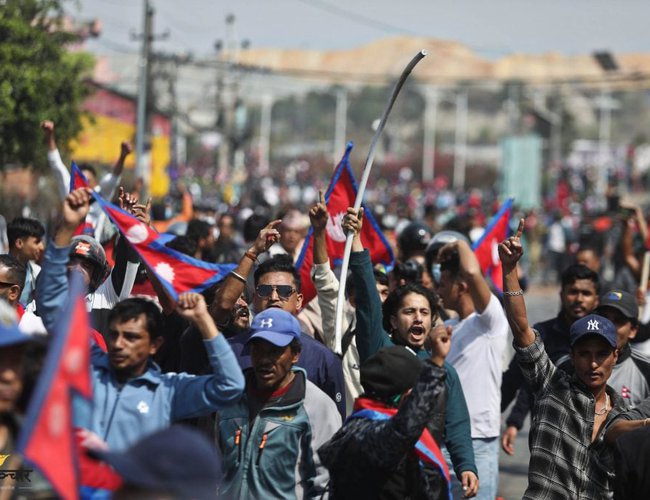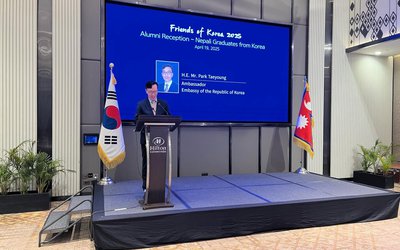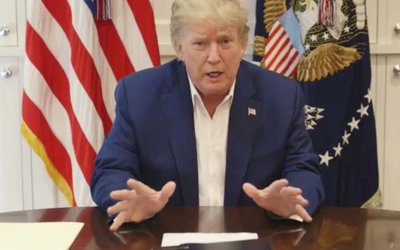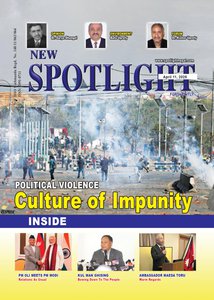
About nine months ago, when the UML and Nepali Congress formed a coalition government under the leadership of Mr. K.P. Sharma Oli, many—including myself—were optimistic. With a nearly two-thirds majority in Parliament, this alliance was expected to bring political stability and spearhead economic development. After years of political uncertainty since the promulgation of the republican constitution in 2072 BS, which saw 14 governments in just 18 years, the people were hoping for change.
Unfortunately, that hope has not materialized. Instead, the situation has deteriorated.
Economic Decline and Unemployment
Despite expectations, the government has failed to curb rising unemployment or reduce corruption. Every day, 2,500 to 3,000 young Nepalis leave the country in search of work. Increasingly, even students who have just completed their secondary education are going abroad, driven by a declining quality of education and a bleak job market at home. These students are unlikely to return after graduation.
The economic indicators are discouraging. Remittances remain the only bright spot, while trade and industrial output have declined. Cement plants are operating at under 40% capacity, and the industrial sector contributed less than 6% to GDP last year. Investment in industry has stagnated due to persistent political instability and corruption.
The agricultural sector tells a similar story. Once a food surplus nation, Nepal is now a net food importer, spending over 30 billion rupees on rice imports last year alone. With much of the rural workforce gone, labor shortages have led to high wages, leaving 32% of arable land fallow and agricultural productivity stagnant.
Federalism: A Burden or a Benefit?
The adoption of a federal system in 2072 BS divided the country into national, provincial, and local governments, aiming to bring governance closer to the people. However, the results have been mixed. Most local governments have failed to deliver, while provincial governments have become another layer of costly bureaucracy.
The economic burden of the federal structure has grown untenable. With dwindling external aid and insufficient domestic revenue, Nepal now struggles to cover even basic administrative costs. Transparency International continues to rank Nepal among the most corrupt countries, and none of the governments formed since 2072—including the current one—have taken these challenges seriously.
Public Disillusionment and Rising Monarchical Sentiment
Public dissatisfaction with both the political system and its leaders is growing. A significant segment of the population now believes that the former constitutional monarchy was more effective than the current republican structure. This is evident from the rising number of street protests demanding the restoration of a Hindu state and constitutional monarchy.
On 25th Falgun 2081, thousands welcomed the former king upon his return Pokhara to Kathmandu, chanting “Come Back King and Save the Nation.” A few days later, on 15th Chaitra, a massive pro-monarchy demonstration was held in Kathmandu, resulting in the deaths of two demonstrators—including a journalist—and the arrest of over 100 political activists. More protests are being planned by RastriyaPrajatantra Party and other monarchist groups.
Diplomatic Isolation
The government’s handling of foreign relations has also been lackluster. Our two major neighbors—India and China—appear discontented with the current administration. Prime Minister Oli has yet to be invited to India, breaking from diplomatic tradition. Notably, ambassadors from India, China, and the USA did not attend a recent diplomatic retreat organized by the Ministry of Foreign Affairs in Ilam, a subtle yet clear sign of disapproval.
Constitutional Flaws and the Case for Reform
Nepal’s federal constitution makes political stability nearly impossible. Provisions designed to ensure inclusiveness have led to fragmented politics, making it difficult for any single party to secure a clear majority. This has fostered weak and unstable governments—a major obstacle to development.
Nepal is one of the world’s oldest nations with a rich cultural heritage. Our history, traditions, and values have long been intertwined with the monarchy and Hinduism. Despite the claims of 2062/63 revolutionaries, the abolition of the 2047 democratic constitution, constitutional monarchy, and Hindu state occurred without public referendum or widespread demand. These sweeping changes were orchestrated by an unelected "extended parliament" dominated by Maoist appointees—a move that many now view as illegitimate.
The Path Forward
It is time for Nepal’s leaders—both in government and opposition—to rethink the current political system. Given the increasing calls for change, the restoration of the 2047 democratic constitution, with appropriate revisions, may be the most viable path forward. This system provided a more stable framework while preserving Nepal’s cultural and religious identity.
A poor country like Nepal cannot sustain an expensive and inefficient federal system indefinitely. For the sake of long-term stability, economic development, and national unity, our political representatives must revisit and correct the missteps of the past. The growing grassroots demand for a return to constitutional monarchy and a Hindu state cannot be ignored much longer
- Recent Visit To Mansarovar, Kailash, And Lhasa: Some Experiences
- Oct 08, 2023
- Why Agriculture Failed In Nepal?
- Jul 06, 2023













